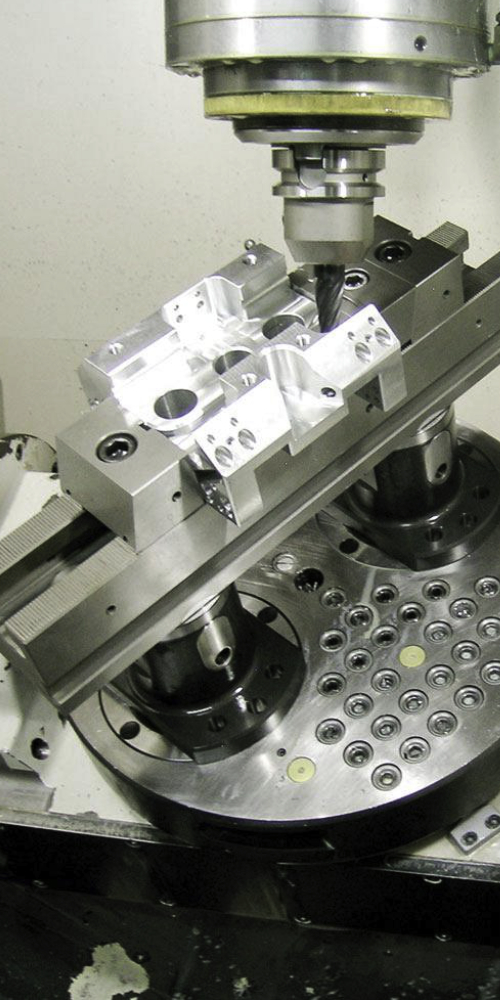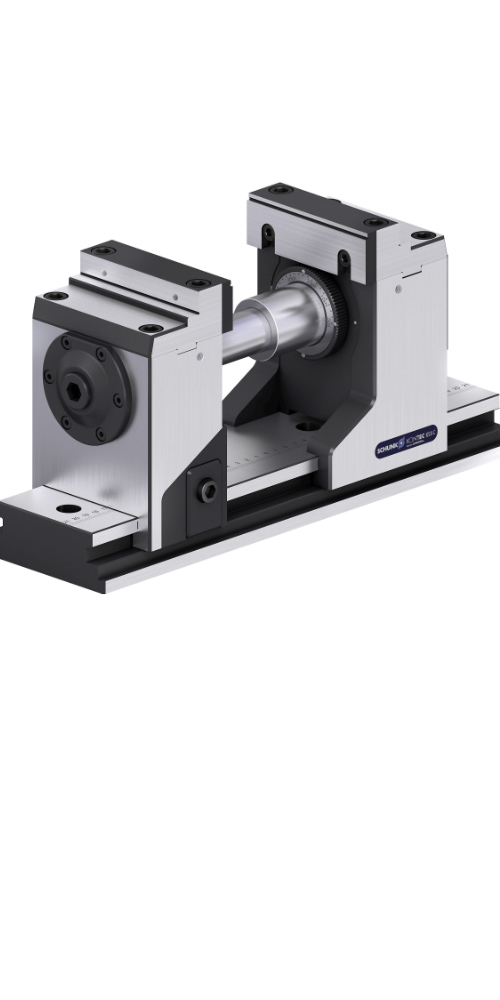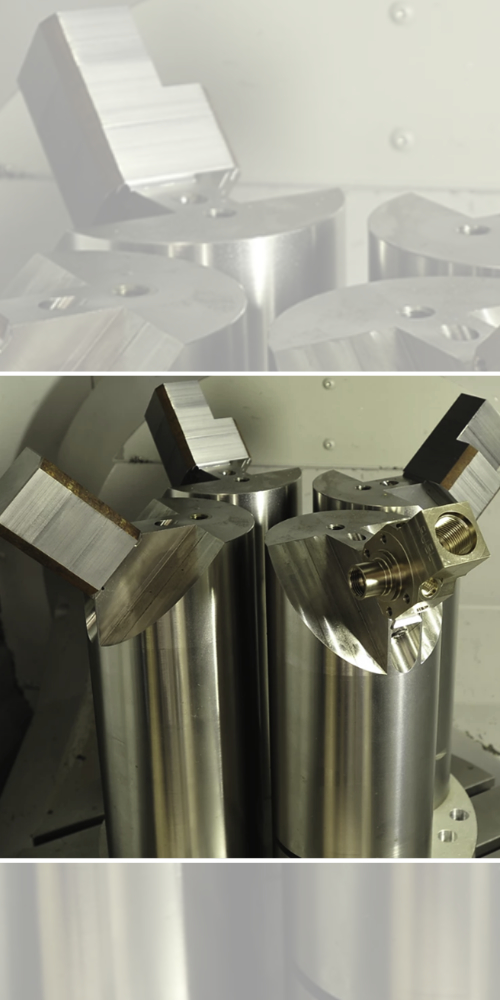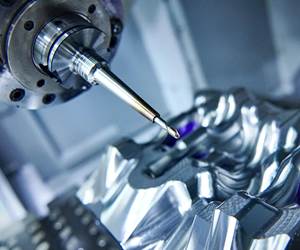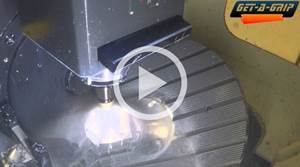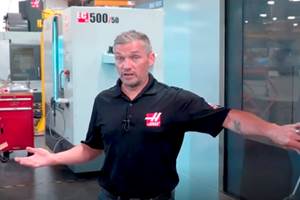In three-axis machining, the fixture is designed to hold the part in one position. A five-axis machine has more flexibility in its movement to reach all surfaces, but it can only do so if the fixturing or workholding allows access.
With five-axis machining attention must be paid to clearance and eliminating interference between the workpiece fixturing and the machine table, spindle housing and cutting tools. This is especially evident when machining a small part on a large table. Clearance and interference problems occur because small parts tend to be concentrated toward the center of the machining table. The edge of the table can become an impediment as the table pivots.
With five-axis machining attention must be paid to clearance and eliminating interference
